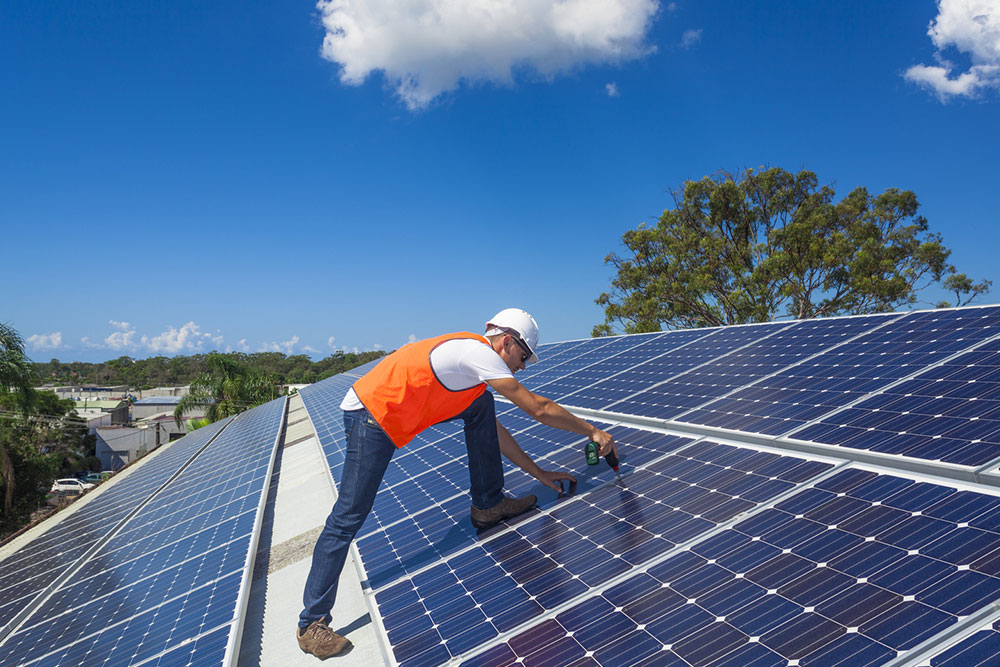14 key factors to consider for solar panel installation

Installing a solar system not only reduces dependence on traditional grid-based electricity but also contributes to a greener environment. However, this venture requires careful consideration of various factors to ensure optimal performance and longevity of the system. Beyond the initial enthusiasm, prudent decisions play a pivotal role in reaping the full benefits of solar energy. Understanding these critical considerations is akin to laying a solid foundation for a structure.
Location is key
The most crucial factor in installing a solar system is the geographical location of the property. The amount of sunlight a location receives directly impacts the energy output of the solar panels. Areas with ample sunshine throughout the year are prime options for solar installations. However, even regions with less consistent sunlight can benefit from solar energy with the use of advanced technologies and appropriately angled panels.
Roof suitability and orientation
The condition and orientation of the roof play a pivotal role in the effectiveness of a solar system. Ideally, the roof should be structurally sound, free from shading obstructions like tall trees or nearby buildings, and possess a suitable angle for optimal sun exposure. South-facing roofs receive the most sunlight in the northern hemisphere, but adjustments can be made for east or west-facing orientations.
Budget and financing options
Installing a solar system represents a significant investment, and considering the budget is crucial. Factors such as the size of the system, quality of materials, and installation costs should all be taken into account. Moreover, exploring financing options, including government incentives, tax credits, and solar financing programs, can significantly ease the financial burden and make solar energy more accessible.
System size and energy consumption
Determining the right size for the solar system depends on the household’s energy consumption patterns. A thorough analysis of past energy bills can provide valuable insights into the amount of electricity the solar panels need to generate. This data ensures that the system is appropriately sized to meet the household’s energy needs, ultimately maximizing the benefits of solar power.
Quality of solar panels and components
Selecting high-quality solar panels and components is essential for the long-term performance and durability of the system. Investing in reputable brands and ensuring that the components meet industry standards can prevent issues and maintenance costs down the line. Additionally, warranties and guarantees should be carefully reviewed to provide added assurance.
Regulations, permits, and grid connection
Navigating the regulatory landscape is a critical step in the solar installation process. Local building codes, zoning regulations, and homeowners’ association rules may impose specific requirements for solar installations. One must also check the necessary permits and approvals to avoid legal complications. Additionally, understanding the grid connection process and net metering policies is vital for effectively integrating the solar system with the existing electrical infrastructure.
Local climate and weather patterns
The prevailing climate in a region significantly impacts the energy production of a solar system. Areas with abundant sunlight are naturally more conducive to solar energy generation. However, regions prone to overcast days or long winters may experience fluctuations in energy output. One needs to understand these patterns, set realistic expectations, and plan for potential energy storage solutions like batteries for periods of reduced sunlight.
Shade analysis and mitigation
Conducting a thorough shade analysis is a critical step in optimizing solar system efficiency. Shading from nearby structures, trees, or even neighboring buildings can significantly reduce the sunlight that reaches the solar panels. This can result in a drop in energy production. To mitigate shading issues, strategies such as tree trimming, repositioning panels, or even using advanced technologies like micro-inverters or power optimizers can be employed.
Inverter selection and efficiency
The inverter plays a crucial role in a solar system as it converts the direct current (DC) generated by the solar panels into usable alternating current (AC) that can power household appliances. Without the inverter, the electricity generated by the solar panels cannot be utilized effectively for household use. Choosing the right type of inverter, whether string inverters, micro-inverters, or power optimizers, is also important. Additionally, opting for a high-quality, efficient inverter ensures minimal energy loss during the conversion process, ultimately leading to higher overall system efficiency.
Maintenance and cleaning
Regular maintenance is critical to ensuring a solar system operates at peak performance over its lifespan. It includes inspecting panels for dirt, debris, or bird droppings that may accumulate and hinder sunlight absorption. Additionally, one must also look for loose connections, monitor system performance, and ensure proper ventilation around the panels. Regular cleaning and maintenance checks not only maximize energy production but also extend the system’s lifespan.
Battery storage options
For homeowners seeking energy independence or preparing for potential grid outages, battery storage systems are a valuable addition. These batteries store excess energy generated during sunny periods for use during low-sunlight periods or emergencies. Evaluating different battery technologies, such as lithium-ion or lead-acid, and their compatibility with the chosen solar system is crucial for an effective setup. Additionally, understanding the capacity and discharge rates of the battery system is essential for tailoring it to specific energy needs.
Future expansion possibilities
Considering future expansion allows for the scalability and adaptability of the solar system. Assessing available roof or ground space for potential additional panels enables homeowners to increase their solar capacity as energy needs evolve. This forward-thinking approach ensures that the solar system remains aligned with changing energy demands, providing flexibility and room for growth.
Contractor experience and reputation
Selecting a reputable and experienced solar contractor or installation company is paramount. A skilled installer can ensure the system is correctly sized, installed, and integrated with existing electrical systems. Checking references, reviews, and certifications, as well as verifying their track record with similar installations, provides confidence in the chosen contractor.
Warranty and after-sales support
The warranties provided by both the solar panel manufacturer and the installation company are crucial for long-term peace of mind. It’s also important to know what is covered, for how long, and under what circumstances. It includes potential maintenance and repair services. A comprehensive warranty ensures that any unforeseen issues are promptly addressed, protecting the investment and ensuring continued system performance.


